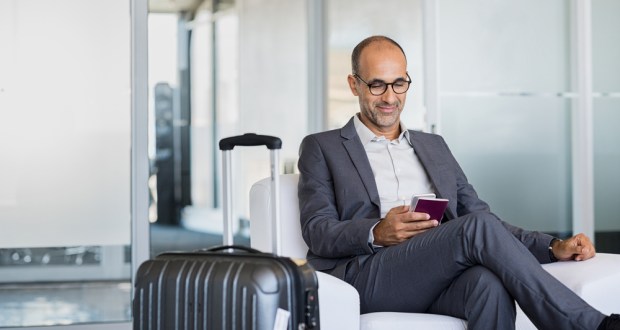Priority Pass And The Challenge Of Making Exclusivity Accessible

Like many innovations, travel firm Priority Pass grew from a problem its founder had for himself.
Colin Evans was in the departure hall of Tokyo’s Narita airport, wondering if hell could be a worse experience than the one he was having. To add insult to injury, he realized that while he was languishing in the anarchy of coach boarding, first-class passengers were serenely awaiting their departure in a lounge. It occurred to Evans that everyone should be able to enjoy the lounge life — not just those able to shell out multiple thousands for a first-class ticket.
The Collison Group was born in 1991, as was its ancillary product, Priority Pass: an international lounge access product that did not require customers to fly a particular airline, hold a specific credit card or buy a first-class ticket.
It was a surprising turn of events for Evans. He told the Financial Times that upon graduating college, he had no idea what he wanted to do, past some rather nebulous goals around becoming a steward for British Airways — a job that turned out to be a bit out of his reach.
“It’s just as well, as I’d have been awful,” he said. “I’d have started talking to the first interesting person and everyone else would have been left waiting for their drinks.”
The Collison Group has given Evans a different way to help customers more comfortably fly the friendly skies, through Priority Pass and his firm’s other travel-related offerings like insurance, health and safety assistance and loyalty program advice. The goal is simply to make lounges more accessible by making them more affordable. Customers can pay for a Standard membership for $99 per year, then pay $27 when they want to tap into a lounge. Standard Plus membership costs $249 per year and includes 10 free visits, with subsequent visits for $27 each. Prestige membership goes for $399 per year and includes unlimited complimentary visits — though guests cost $27.
But accessibility has costs, as airport lounges have become a good deal less exclusive since Priority Pass opened up its services nearly 30 years ago. What first drew Evans to his open-access lounge concept was the peace and tranquility a first-class flyer had within the spaces’ calm walls. But these days, thanks to services like Priority Pass, some of that calm has passed.
“You think, ‘Oh man, I have this lounge access, I can go in there and chill and there will be a bunch of business people on their laptops,’” said Dustin Scott, a promotions expert for a bike-share company. He has a Priority Pass membership via his Sapphire Reserve card, and told the Wall Street Journal that he was thus initially unconcerned about the five-hour layover he was facing on his way to the Ukraine. “[Then] you go in and it’s like Disney World.”
According to longtime lounge enthusiasts, the offerings — particularly in the United States — just aren’t what they once were. While guests fondly remember a time when the lounge included waiter service, entree-sized meals and a haven from the chaos within an airport, Priority Pass has opened them up to a lot more customers and meant the offerings have taken a bit of a hit — Priority Pass is a perk for Amex Platinum and Citi Prestige Card holders as well, after all. Meals have been replaced by salads, snacks and cheese and cracker plates, and waiter service, according to IT executive Bruce Douglass, has been replaced by waiting in line for a Coke — and sometimes even waiting in line for a seat within the lounge itself.
Movements have been made to protect the allure of lounges, however. Chase is limiting the number of guests a cardholder can bring to a Priority Pass lounge to two, instead of the unlimited number once allowed. Any additional guests will cost $27 each. Priority Pass, meanwhile, is trying to help keep people moving in the lounge, offering food and booze credits of around $28 per person. There is a catch, though: People have to leave the lounge to use them at restaurants in the airport.
Will it work? That remains to be seen, but the alternative is beginning to be felt in the market. Lounge operators like American Express are beginning to consider curtailing access, following complaints from cardholders. The company is expanding some of its Centurion lounges and restricting access to holders of Platinum and Centurion cards, which carry annual fees of $550 and $2,500, respectively. If the best lounges slip out of Priority Pass’s reach, then Evans’ company has a problem.
The challenge Priority Pass faces is an interesting case study for any firm looking to offer affordable exclusivity. How do you keep something exclusive — which is the draw of the offering — once you’ve made it affordable enough that anyone can access it?
